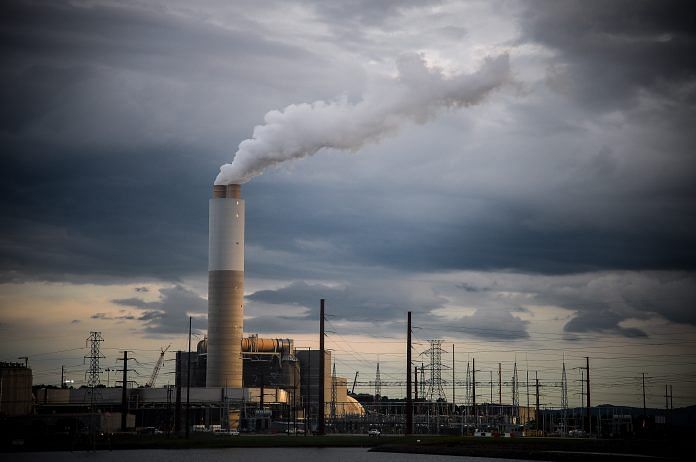New Delhi: Global temperatures are likely to rise by 2.7 degrees Celsius above pre-industrial levels by the year 2100 if countries don’t make deeper cuts in emissions soon, the UN’s Emissions Gap report released Tuesday warns.
The 2.7 degree Celsius estimate includes fresh pledges countries have made ahead of the COP26, as part of the Paris Agreement — a legally binding treaty to keep global warming “well below” 2 degrees above pre-industrial levels — signed by 192 parties in 2015. These targets, called Nationally Determined Contributions (NDCs), are voluntarily decided and pledged.
“Neither current policies nor the latest NDCs and announced pledges are consistent with limiting warming to the goal of the Paris Agreement,” the report says.
China, the United States, and some countries in the European Union have announced net zero emissions by 2050-2060. These net zero targets, combined with the fresh NDCs, have the potential of lowering global temperatures further by 0.5 degrees, to 2.2 degrees above pre-industrial levels by the end of the century.
“Even with the implementation of current NDCs and all net-zero targets, there is still more than a 15 per cent chance that global warming will exceed 2.5°C by the end of the century, and a just short of 5 per cent chance that it will exceed 3°C,” the report says.
Keeping global temperatures from rising above 1.5 degrees Celsius is important to avoid extreme and irreversible climate change, which will result in more extreme, frequent, and intense weather events. Emissions due to human activities have already led to a rise of 1.1 degrees since 1850, an earlier report by the UN’s Intergovernmental Panel on Climate Change (IPCC) had found.
The IPCC report warned that unless all countries reached net zero emissions by 2050, the 1.5 degree Celsius target would be breached within the next two decades.
The emissions gap
The emissions gap is defined as the difference between the greenhouse gas emissions if all NDCs and net zero targets were implemented, and the greenhouse gas emissions from least-cost scenarios that keep global warming to 2°C, 1.8°C or 1.5°C.
According to the report, which looks at emissions projections till 2030, the fresh NDCs and net zero targets only have “limited impact,” reducing projected emissions by only 7.5 per cent compared with the NDCs pledged in 2015. The projections include the targets of 120 countries who had submitted fresh NDCs by 30 September. These 120 countries represent just over half of global greenhouse gas emissions.
In order to limit global warming to 2 degrees, projected emissions need to reduce by 30 per cent by 2030. To limit global warming to 1.5 degrees, projected emissions need to reduce by 55 per cent by 2030, the report says.
The report also points out that as a group, the G20 countries are not on track with their 2015 NDCs.
“Only 10 G20 members (Argentina, China, EU27, India, Japan, the Russian Federation, Saudi Arabia, South Africa, Turkey and the United Kingdom) are likely to achieve their original unconditional NDC targets under current policies. Among them, three members (India, the Russian Federation and Turkey) are projected to reduce their emissions to levels at least 15 per cent lower than their previous unconditional NDC emissions target levels under current policies, indicating that these countries have significant room for raising their NDC ambition,” says the report.
India has neither committed to net zero emissions nor has it updated its NDCs ahead of the COP26, arguing that big cuts in emissions should come from developed countries who are responsible for historical emissions.
Also read: 2020 deadline missed, developed countries now hope to deliver $100 bn climate finance by 2023



